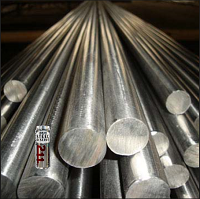Japan’s Big Boy Deep-Sea Turbine Will Harness th
Post# of 128926
Wed, June 8, 2022, 1:09 PM 3 min read

Japan’s new 330-ton subsea power generation system can float in strong currents to generate renewable energy.
The 100-kilowatt-class “Kairyu” system completed a 3 1/2-year-long demonstration of the machine in February, and will now move toward commercial use.
Dual-turbine blades both generate energy and keep the machine steady in one location.
Japan is dropping a massive 330-ton turbine power generator onto the ocean floor just off the country’s coast in a bid to source theoretically limitless renewable energy.
Over the past decade, IHI Corporation has been developing “Kairyu,” a 100-kilowatt-class generator that can harness the power of ocean currents. In February, the Tokyo-based engineering firm successfully completed a 3 1/2-year-long test of the subsea turbine in the waters of southwestern Japan. You can expect to see it up-and-running sometime in the 2030s.
To make it all work, IHI devised an airplane-like structure, complete with a main fuselage, as part of an array of three cylindrical float pods. Both the right- and left-side pods feature a 36-foot-long turbine blade; each rotates in the opposite direction of one another to cancel out rotary torques—the measure of the force that can cause an object to rotate about an axis—and stably maintain the generator’s position underwater.
The Kairyu system, proposed for deployment in the Kuroshio Current, one of the world’s strongest along Japan’s eastern coast, will be moored below sea level and anchored to the bottom of the sea. The 65-foot-long and 65-foot-wide generator floats above the anchorage point, roughly 160 feet below the surface of the ocean.
“The floating generator anchored to the bottom of the sea takes advantage of the balance between its buoyancy and the drag caused by the ocean current, thereby generating electric power while floating at any desired depth,” IHI writes in a company document.
In the process, placing the subsea turbine in strong ocean currents allows the flow of the ocean to turn the turbines, generating power. The machinery can even move to float at the current’s strongest points. When maintenance is needed, operators can float the turbine to the surface of the water for easier access.

The machine comes with its own ability to ensure optimum positioning. “The ocean power generator has a mechanism that changes the pitch angle of the blades of the turbine rotors in accordance with the speed of the ocean current so that electric power can always be efficiently generated at any flow speed,” IHI writes.
Starting in 2017, IHI partnered with New Energy and Industrial Technology Development Organization (NEDO) for a multi-year test of the prototype device. They found that with a rate flow speed of approximately three knots, they could steadily generate 100 kilowatts of power, or 50 kilowatts per turbine unit.
The lines that anchor the turbine to the ocean floor can also house power transmission cables, connecting to a submerged cable that can carry the energy back to the power grid on land.
The steady rush of ocean current is one of the driving forces of the new technology. While wind, photovoltaic, and tidal energy have capacity factors of anywhere from 10 percent to 40 percent, IHI says the ocean current’s capacity factor ranges from 40 percent to 70 percent, giving them a stable push of current.
With Japan having the sixth-largest territorial waters in the world, the New Energy and Industrial Technology Development Organization believes the Kuroshio Current alone could generate 200 gigawatts of energy via submerged turbines—roughly 60 percent of Japan’s present generating capacity, Bloomberg reports.
----
"While Japan looks for other ways to help their country, The good old USA can't figure out what gender they want to be." Sickening...
Source:
https://finance.yahoo.com/news/japan-big-boy-...00391.html
 (2)
(2) (0)
(0)